
|
A Crystalline Herbal and Bestiary: A Journey To An Alien World Part III by Richard L. Howey, Wyoming, USA |
Visit the Micscape Library to read other parts in the series.
The Zoological Gardens
(continued)
As promised, Zettel returned after an hour and we continued our stroll. The Zoological Gardens were a pleasant environment, but quite different from the Botanical ones in that there were areas here that were fenced and fortified suggesting the containment of some formidable creatures. As a child, I had always found dinosaurs amazing and absorbing and was a great fan of the Jurassic Park films but, in my wildest dreams, I never thought that I would encounter a living alien equivalent of one. I was both petrified and exhilarated.

The delight of seeing this gigantic “lizard” lumber around like an animated beastie done by Ray Harryhausen and then colored by some French pastel impressionist was overwhelming. At any moment, I was expecting thunderous roars and Zettel watched me carefully as this giant creature opened its mouth and began to chirp and twitter. I nearly collapsed with laughter. It was one of the silliest and most incongruous set of vocalizations I have ever heard. This huge beast turned toward me and its color patterns began to alter rapidly rather like what happens when a squid becomes agitated. Apparently my laughter annoyed it and it gave me baleful look and again began peeping and piping which only made me laugh harder. Suddenly, it turned completely black and visually disappeared; although one could still hear little pips and squeaks, nonetheless, it was as though someone had turned out all the lights.
“Oh you are naughty,” said Zettel. “You have upset her. She is a very emotional being, a very caring parent and produces a nectar which surpasses your very best wines. On the other hand, she is a bit temperamental and if we were not behind this sound shield, she might direct a sound beam at us so piercing and intense that our brains would instantly be turned to jelly–that’s that wiggly, colored, aspic dessert that you humans like so much isn’t it?”
“No, no, that’s Jell-O, but either reference is in this case quite appropriate.”
The Consul paused and said, “Nonetheless, let me update the Bromonian collective memory. We must always be attentive to detail and accuracy.” Zettel seemed to go into a trance state and after a few moments opened his eyes and suggested that we proceed.
The next enclosure we came to was filled with trees, shrubs, and ferns (or at least, that’s what they generally looked like). On the ground, feeding on the plant litter were hundreds of snail-like creatures that almost looked like terrestrial nudibranchs. They had a beautiful light green metallic sheen.

These were called Lachma. Perhaps their most interesting feature was that they sprayed a complex chemical compound from the four tubes in their heads onto the litter, pre-digested it, paused and then used the tubes to vacuum up their meal. They were about 4 feet long and displayed a prodigious appetite. All at once, a creatures twice its size emerged from an underground burrow, seized a Lachma and swallowed it. I later learned that this was a Cridasc with an enormously flexible mouth. It resembled some of our bristle worms on Earth and its size and color patterns made it fascinating.

As this “worm” moved, its entire outer surface undulated causing the patterns on its dorsal surface to shift constantly. It was a striking display.
“Don’t worry too much about the Lachma,” Zettel remarked. “They are very abundant and whenever this happens they release thousands of eggs which are exceptionally tough and durable and they pass right on through the Cridasc creating a new generation of food. Thus far, I have been trying to present to you organisms which are somewhat analogous to your own in order to make it a bit easier for you to relate to them. So, let us proceed to the aviary and then perhaps tomorrow, you will be prepared to enter the realm of creatures almost beyond your imagination and, in some cases, beyond your nightmares.”
The aviary covered several hundred acres and had no walls or fences. Zettel explained that the area was covered by an energy field which gave its inhabitants a high frequency warning if they approached too close to it. The first of the denizens we saw was a Genviolmin.
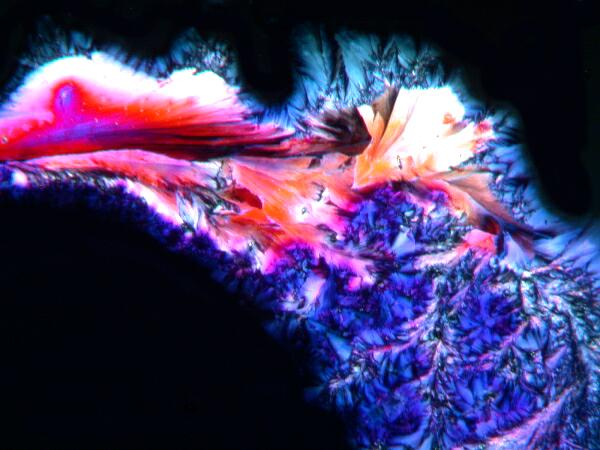
Its very size told me that it was flightless and as I was thinking that, my jaw dropped as this “bird” gracefully ascended on 8 pairs of wing and soared on the wind currents which I was sure some Bromonian technology produced. The beak on this bird convinced me that I didn’t want to be anywhere in its proximity in the wild.
The Consul smiled and said, “Would you like me to send a few dozen of these with you to Earth? They will survive very well in your tropics and they reproduce rapidly.”
“A most generous offer, Dr. Zettel, but I must decline. (I knew he was teasing.) You see, our customs regulations are very strict and these poor creatures would have to remain in quarantine for 10 years, which would be dreadful.”
“Of course. I quite understand.”
We strolled further and came across a Discroc.

This too had a formidable beak and reminded me of some prehistoric creature. Zettel explained to me that the Discroc generated thunderous bass sounds which it could target directly at its prey. The intensity of this sound beam was such that the internal organs of any creature so targeted were reduced to pulp. Zettel added that there was a secondary energy dome limiting the area of the Discroc–a sort of high-tech cage–otherwise it would in short order depopulate the aviary. It was difficult to believe that this creature could fly, but I was fortunate enough to capture an image of part of one wing.
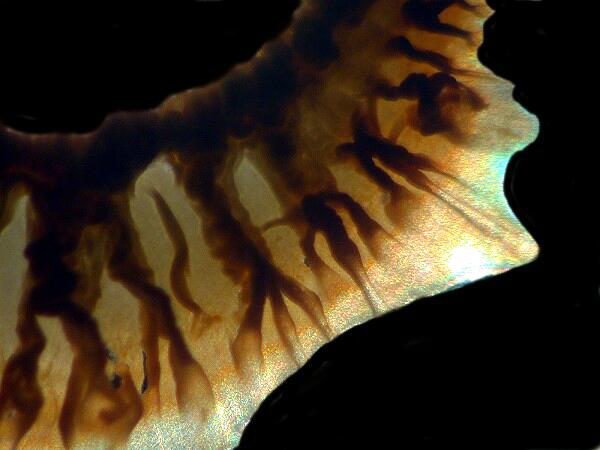
It was a remarkable structure that this animal could inflate and then retract when it wasn’t in use. You can see the network of large, wide vessels through which fluid was pumped to inflate them for flight. I was so absorbed that I was quite startled when Zettel told me to pick up a pair of earphones lying on a ledge.
“The Discroc has sighted prey. You will have the rare opportunity of hearing its devastating cry.”
With some trepidation, I put on the earphones and waited. Suddenly there was a sound from the bowels of Hell. I tore off the earphones and glared at the Consul.
He smiled and said, “Those receivers are designed to filter the sound in such a way that you heard that sound beam at only one one-hundredth of its original intensity. Fortunately, we only have two of these creatures–dumped on us by a cargo ship from Karlon–and they breed only once every 800 years. I’m afraid the animal rights people are not very happy with us in this regard, because we have been harvesting the offspring for research studies for the last several millennia. If the activists get too vociferous, we offer them the opportunity to adopt one. Even the sound blast from an infant would liquify their brains. Strangely, we have had no takers on our generous and humane offer. Enough, let me show you one of my favorite birds. It truly is quite a delight. It is called a Makana.”
What I beheld looked to me more like a very large and exquisite butterfly than a bird.

Consul Zettel indicated a very odd-looking piece of apparatus and asked me to put it on. It looked something like some medieval dentist’s ideal instrument of torture. I really didn’t know how to attach it nor whether I wanted to.
“No, no,” Zettel intervened. “It’s just that small wire, which is an electrode and you simply place that tiny padded clip on your tongue. It is quite painless.”
I did as instructed and in a moment I was experiencing a symphony of gustatory sensation; the Makana communicate through taste sensations! It possessed a vast repertoire and could blend them with an astonishing subtlety. It was better than having a 10 course meal at a 5 star restaurant. This lovely creature produced such gustatory and visual pleasure that I had no problem understanding why Zettel was so fond of this being. This immediately brought to mind the amazing plant we encountered yesterday which accomplished a similar feat, but the Makana’s performance was multi-dimensional compared to the plant’s. I asked Zettel whether these two organisms from radically different biological kingdoms could communicate with each other.
“A very good question, Professor. We have been trying to find an answer to that puzzle for a little over 400 years. We have some intriguing indicators that they can, but nothing definite. This is a case where it’s extremely difficult to devise sensible experiments to find out.
We had been moving slowly along the walkway and had come to what look like a hole in the energy field of the aviary.
Zettel smiled broadly. “I’m very proud of this; I designed it and supervised the construction personally. I know that on Earth you have parts of large aquaria that allow visitors to go underwater and see the fish swimming around and above them and observe the organisms on the sea bottom also. Well, I came up with the idea of “sculpting” the energy fields to do a similar thing with the aviary so that one can be close to the birds, watch them flying, and observe them from a number of different levels.”
As we entered the energy tube and began our assent, I was full of anticipation, but utterly unprepared for what I saw. It was like an aerial coral reef! Our first encounter was with a flock of Someths with their striking orange and blue plumage.

We could hear their chittering and twittering as they circled around us, for Zettel had fine-tuned the energy fields to produce an overwhelming experience both visually and auditorily. It was clear that this was to be a day of sensory delights. The Consul was very pleased with my reactions and enthusiasm.
“Come,” he said. “I understand that you very much like the soaring and gliding of the raptors on your planet–especially hawks. So, I have a special treat for you in Lialmods.
We ascended to the next level and I was thunderstruck by these birds’ wing size in relation to a relatively small body.
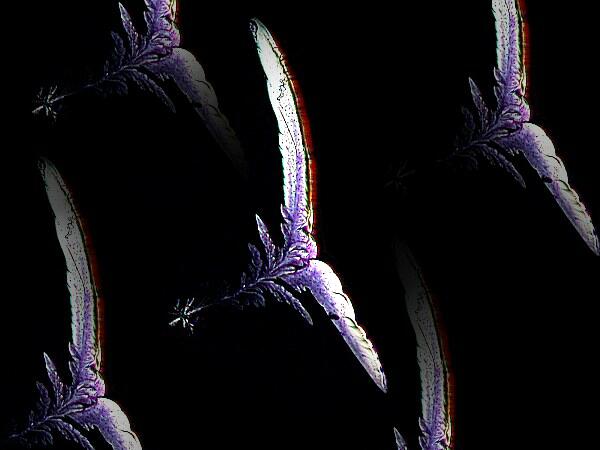
I had never seen such subtle hues of violet in the wing of any bird on Earth and there was a secondary pair of wings almost completely violet and much smaller than the primary pair. Like our own raptors, the Lialmods could both glide effortlessly and dive like fighter pilots. Clearly, these were powerful predators.
At the next level, there was a large platform on which was perched a formidable looking bird. Zettel told me that from a gland at the back of the mouth it could secrete a toxic mucous which it would spit at its prey from 100 feet–a sort of avian spitting cobra.

As we watched some of this toxic, thick saliva dripped from the lower part of its beak and created a hole in the platform.
“Damn that bird!” Zettel roared, all music gone from his voice. In utter exasperation, he said: “We have to rebuild that perch every month!” Come, let us go observe something more pleasant.”
I was tempted to remind him of what he had said about tolerance for alien creatures, but I decided against it. As we approached the next level, Zettel’s irritation quickly dissipated and a moment later I saw why. What I beheld was the most fabulous bird I have ever seen in my life. I was speechless.
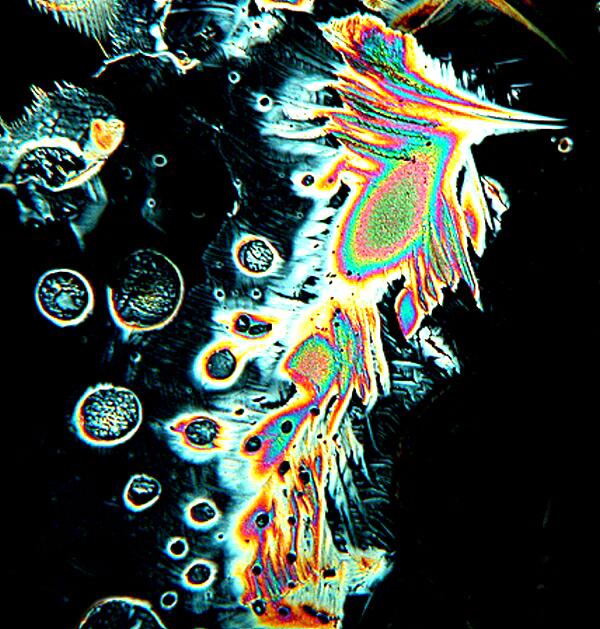
This was a being which was truly a concerto of color. I was able to capture an image of it at a special moment, for it was releasing aerial eggs and in the upper left you can see one hatch. For my records, I wanted its name and I inquired of Zettel.
He laughed and asked, “Do you really want to know? It’s 533 letters long and the name of the planet from which it comes is 872 letters long. I’ll send you all that in an e-mail. We call it a Cholra which means ‘beautiful spirit’. Isn’t it magnificent?”
I was touched by the tender expression of enthusiasm in Zettel’s tone and replied: “Indeed it is. One of the loveliest creatures I have ever had the privilege of seeing.”
He smiled, deeply pleased. “Then you will also like its cousin which we will see on our descent.”
We went down two levels to observe a male and female bird from the planet Brzztkl (pronounced Krik). These were very colorful, especially the small male.

The female was pregnant and the coloration was somewhat muted, but equally lovely.
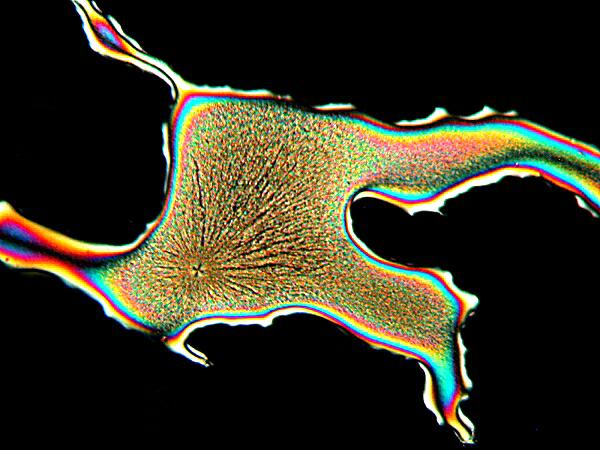 ]
]
Zettel told me that if they occurred on Earth, we should surely have called them Australian Boomerang Birds, for they would depart from their nests, spin through the air, and if they encountered prey, extend their razor-sharp claws on their wings, slice up their unfortunate dinner, collect the remains and return to the nest. After that description, I was rather glad that we didn’t have them on Earth.
We descended to the bottom level.
“I promised you a glimpse of the cousin of the Cholra with which you were so taken. Its cousin, the Kholtrat, is in some basic respects as repellent as the Cholra is delightful.”

“You can see the strong parallels in body shape, beak, and coloration, but the Kholtrat doesn’t have all the elaborate tail plumage. Observe also how virtually the entire body is bordered with a reddish-brown aura and that the energy field immediately around the Kholtrat is a grayish-white. It’s metabolism is truly bizarre, even to Bromonians who are accustomed to encountering
very, very strange phenomena. On Earth, you have some legends of fire-breathing creatures called dragons. Well, the Kholtrat is a an avian dragon and it can produce jets of flame not only from its beak, but from any of those reddish-brown plumes. It’s metabolic processes are such that it generates large quantities of a highly inflammable gas. Its anatomy has been well-studied, since from time to time one of these creatures will gorge itself, produce too much gas and end up asphyxiating itself. That gives us an opportunity to perform a necropsy and study its inner structures and how they function. Kholtrat has an intricate network of tubes which lead from its digestive chambers to the skin surface creating this continual cloud of gas. It can activate just one or two jets or let loose with its entire battery of flame throwers from all directions. It directs a complex chemical compound with pinpoint precision to the gas jets it wants to ignite and the results are devastating for anything in its path. Who every dreamed that flatulence could be turned into a weapon?”
I burst into laughter. It was a wonderful relief to discover that Zettel did indeed have a sense of humor. He winked at me, but I’m not sure with which eye and from a pouch on his lower left side there floated down to me an extraordinary object.

“That’s a Kholtrat feather which I thought you might like to have as a kind of souvenir of your visit here with me.”
I was very pleased. “Indeed, I would. Thank you very much.” As it floated within reach, I stretched out my hand to grasp it and nearly fell to the ground when it came into my hand. It must have weighed10 pounds!
Zettel explained. “It is a metallic crystal which is very strong, very heavy, and necessarily fireproof. When the bird expires, all the feathers take on this grayish-green color. I collected several of them that last time we conducted a necropsy, so I am very glad to present one to you. It will be quite interesting for you to see what your colleagues think of it, since the damned things are nearly indestructible.
Ah, yes, let’s move beyond the aviary. I promised to show you some of our more exotic forms of animal life. The first will look quite familiar to you in the shape of its head, but its coloration looks as though it had been done by one of your French pointillist painters and I must say that the Alsolom is not exactly man’ best friend.”

“It’s temperament is less like your dog and much more like an hyena. It fawns when threatened; if you turn your back, it will attack; it hunts in packs and turns cannibalistic if one of its own is injured; it is foul-smelling and it makes a loud clucking noise like a demented chicken. Expect for their marvelous coloring, they are extremely unpleasant creatures. Let us proceed.”
The next exhibit was a Doscan which would be a taxonomist’s nightmare.

The trunk of the creature did, in fact, almost look like a tree trunk, but it possessed an ape-like face–two eyes, a nose, mouth, chin, and a forehead with ridges which appeared to be surrounded by hair–but then from the chest area there arose, as you can see, a bizarre and grotesque duo of projections, the lower one possessing 2 eyes (the second one is on the other side and thus not visible in this photograph). This lower structure also had a mouth. The upper projection looked like a shiny, gnarled, discolored witch’s finger. Just on the basis of its physical appearance, I found it rather repugnant. It struck me as the result of some mad scientist’s experiments of trying to fuse together two utterly different organisms.
Zettel interrupted my musings and said, “The Doscan is a rather sad creature. It can learn a few sentences in almost any language with superb pronunciation and inflection and can repeat them on command, but it doesn’t understand anything it says; it’s rather like your parrots. However, your parrots are spirited and seem cheerful, whereas our poor Doscan always seems quite dejected as though it has just sufficient intelligence to realize that it merely mimics and does not really grasp anything that it says.”
As I walked further, I contemplated the melancholia of a creature just bright enough to understand that all of its aspirations were out of reach. As we continued through the park, we were all at once assaulted by a swarm of hideous shrieking, little insect-like creatures called Abelascs which were about an inch long and I assumed these were the Bromonian equivalent of our mosquitos.

However, these whining, noxious creatures were multi-winged, darting and diving; horrors so agile, they were impossible to swat and furthermore they didn’t have to get closer than 3 feet when they would fire a tiny dart-like projectile with a hollow cord that served as a kind of straw to siphon off whatever liquids it encountered, in this case, some of my blood. Zettel was occupied using the ray from his lower eye to incinerate these little monsters.
“Damned bloody nuisances,” he said in a tone that sounded like a British Episcopal Archbishop whose cathedral had been invaded by mobs of school children. “These are creatures for which I can find no defense at all, in spite of my best efforts. They spread disease; they cause serious disabilities; they contribute absolutely nothing positive. They arrived on a cargo ship from a thoroughly disagreeable planet called ‘Yzkl’ which translates into your language as ‘Hades”. When they first arrived, I urged the Supreme Council to, at the very least, sterilize them so that they could not reproduce. But, no, there was a tiny, but highly vocal group–The PTAS (Preserve The Abelascs Society)–who made so much noise, that the Council foolish capitulated and so now we are cursed with the hideous things.”
The attack had ceased, thanks to Zettel and the ground was littered with the corpses of Abelascs. I hurried away from the scene, for these vile beasties were emitting a foul odor that smelled rather like burning tires.
Zettel joined me and suggested that we adjourn for the day. We were both rather out of sorts after this bit of misadventure and we agreed to make a fresh start in the morning. Zettel promised that the start of the day would involve an agreeable and important experience. I returned to the hotel and slept soundly.
All comments to the author Richard Howey are welcomed.
Editor's note: Visit Richard Howey's new website at http://rhowey.googlepages.com/home where he plans to share aspects of his wide interests.
Microscopy UK Front
Page
Micscape
Magazine
Article
Library
Please report any Web problems or offer general comments to the Micscape Editor .
Micscape is the on-line monthly magazine of the Microscopy UK website at Microscopy-UK .